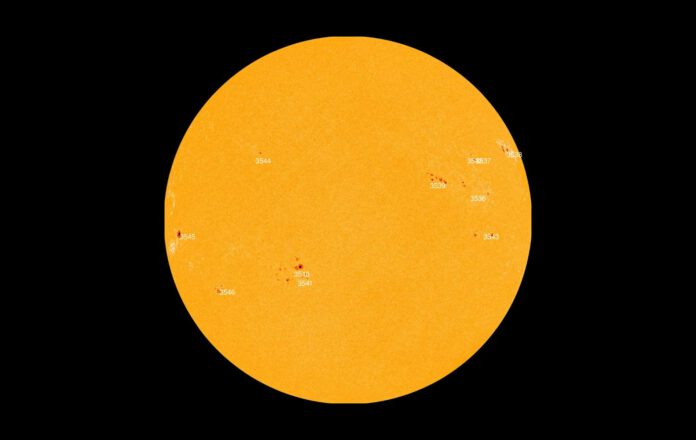
The sun has been remarkably active recently. Earlier this year, the most powerful solar flare of the sun’s current cycle was produced. As of now, a staggering eleven groups of sunspots can be observed on the solar disk.
The Sun: An immense nuclear reactor
The sun, our astronomical parent, serves as a colossal nuclear reactor, incinerating five million tons of hydrogen fuel every second. The fuel supply is substantial enough to last another 4.5 billion years. While it might be easy to perceive the sun as a rather dull sphere of gas, it actually adheres to an eleven-year cycle. During a solar minimum, the sun remains relatively calm and few sunspots are visible. However, during a solar maximum, the sun becomes significantly active, with many sunspots observable on its surface.
What are Sunspots?
Sunspots are regions on the sun that are a few thousand degrees Celsius cooler than the rest of the sun. These spots are caused by disturbances in the star’s strong magnetic field. They appear black, but this is due to the rest of the sun’s surface being exceedingly luminous. Last year, the modern Inouye Solar Telescope captured these beautifully detailed images of sunspots. Did you know that these sunspots are actually larger than Earth itself?
More than Eleven Sunspot Groupings
Currently, eleven groups of sunspots can be observed on the sun. It’s plausible that more sunspots are present, but from our perspective on the Earth’s surface, we are only able to observe one side of the sun. The eleven sunspot groups are primarily producing small C-class solar flares. Sunspot AR3546 is the most unstable and may produce a larger solar flare in the coming days.
Chance of Northern Lights?
Astronomers categorize solar flares into three classes: C-class, M-class, and X-class. X-class solar flares consist of the most powerful explosions. Scientists predict that this year will witness a peak in solar activity, potentially meaning many more X-class solar flares will be visible. If the plasma cloud comprising protons and electrons is directed towards Earth, the aurora or northern lights could potentially be visible in countries around the globe. Is this something we can expect in the upcoming weeks? The world waits in eager anticipation.











